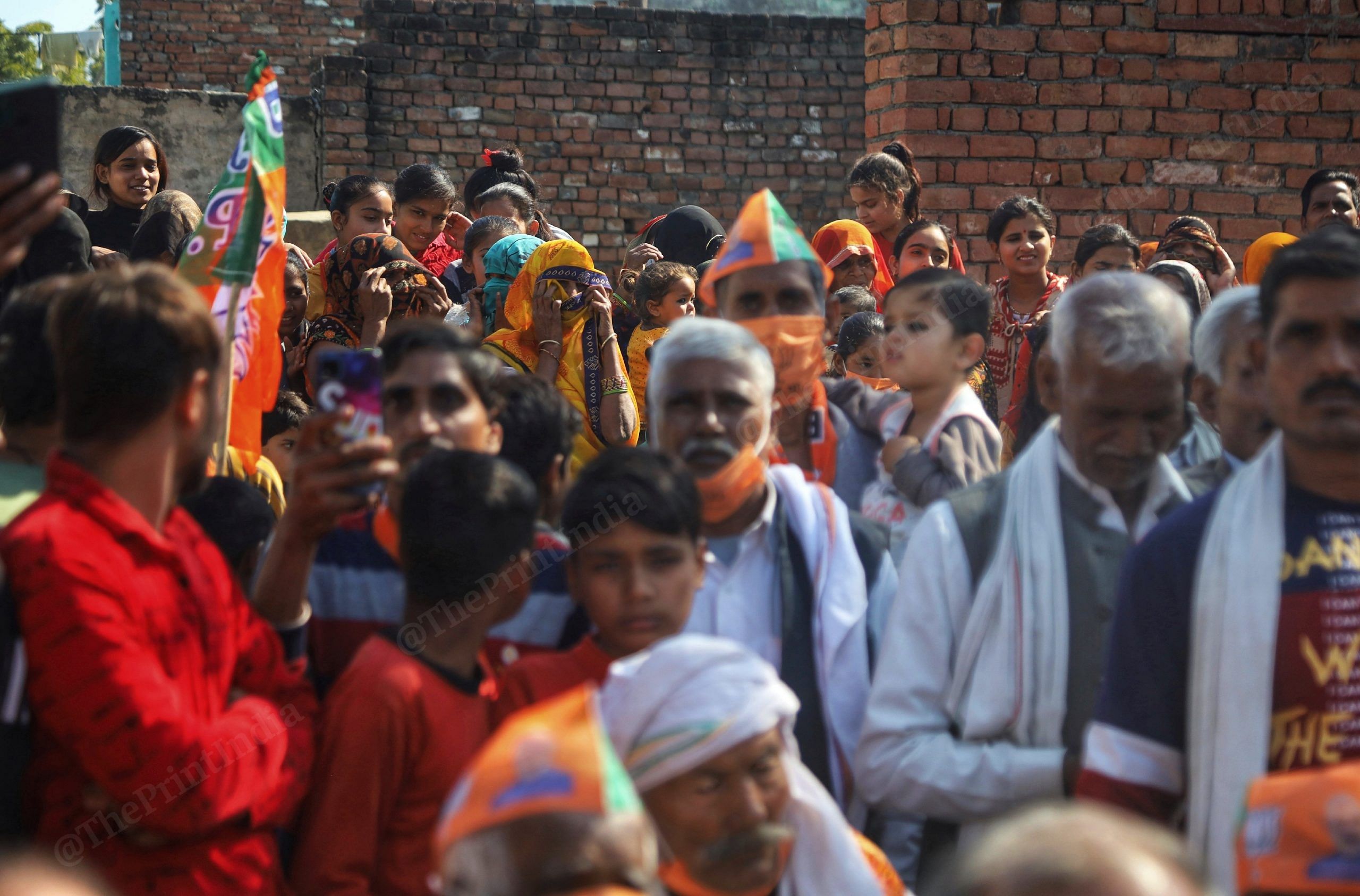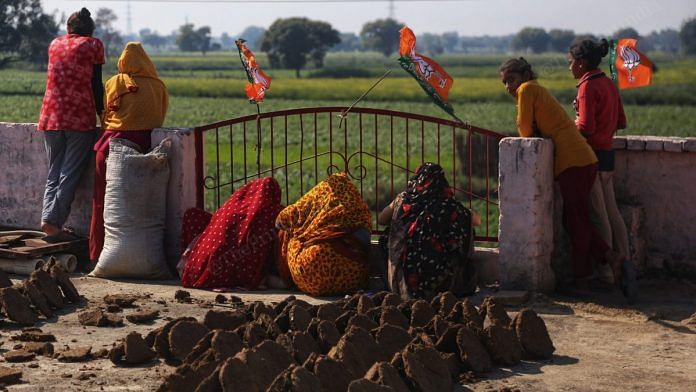From Jayalalithaa to Nitish Kumar, Mayawati to Priyanka Gandhi Vadra, election strategists and psephologists have been announcing from the rooftop the ‘Nari shakti’ factor in Indian elections. The stereotype of women voting the same way as the male members of their families has slowly been demolished in successive elections. Ahead of the Bihar assembly elections in 2020, Prime Minister Narendra Modi went on to call women the important ‘silent voters’. But election campaigns are almost always about showcasing brute, male power, literally edging women out of the public space.
Women empowerment, safety and girls’ education is part of almost every party’s election manifesto, but come campaign time, most rallies either lack women or see them hovering in the background in a sea of men. Participation of women voters in elections, however, has increased over the years. A 2019 study, ”Women voters in Indian democracy: A silent revolution”, suggested that there has been dramatic rise in participation of women voters since the 1960s. The study also claimed that this increase has helped in eliminating gender bias in voting over time. The ratio of women every 1,000 male voters has increased from 715 in the 1960s to 883 in the 2000s.
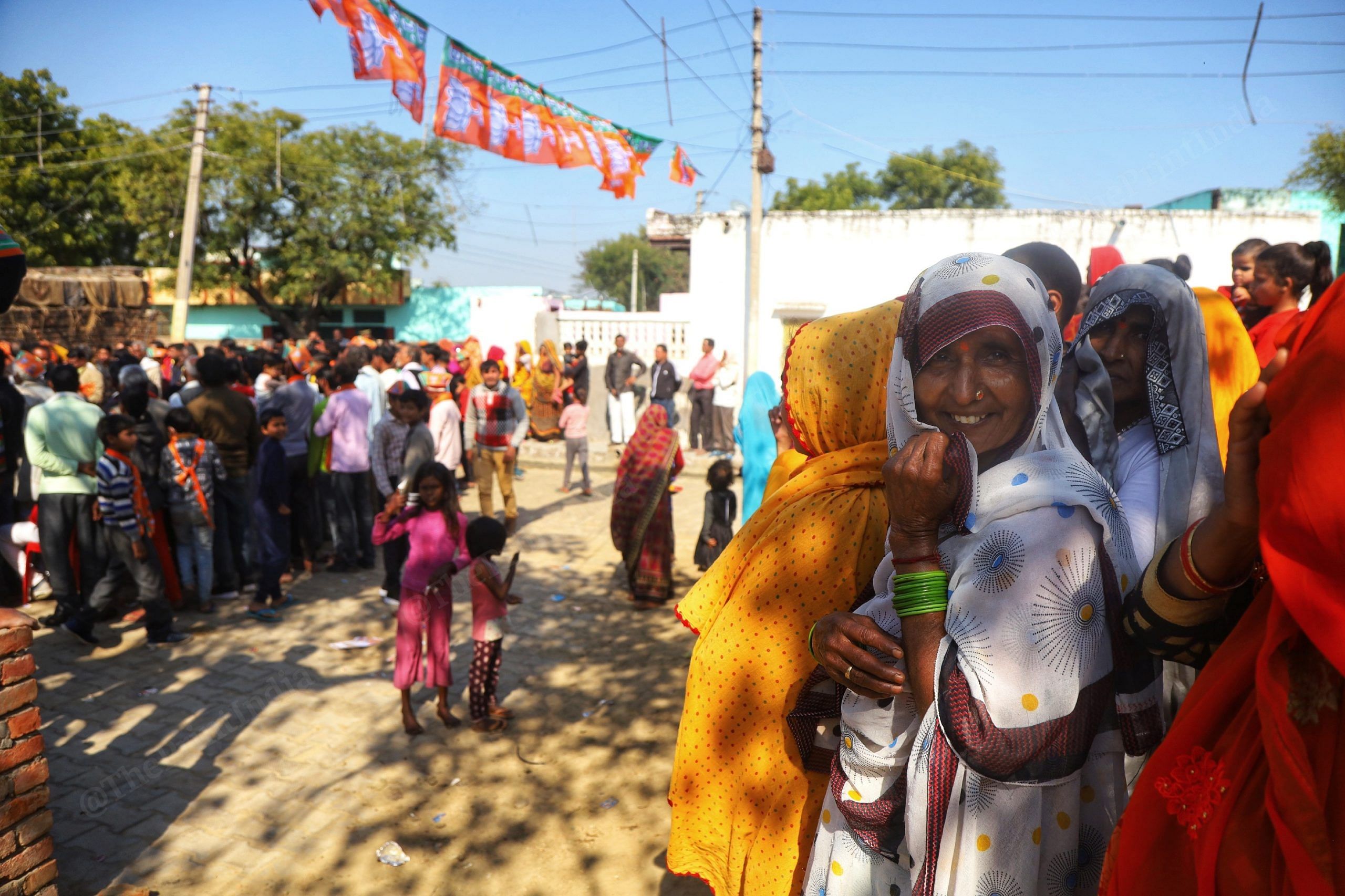
And yet, what we saw in most Uttar Pradesh rallies ahead of the assembly elections was how women were pushed back in public spaces.
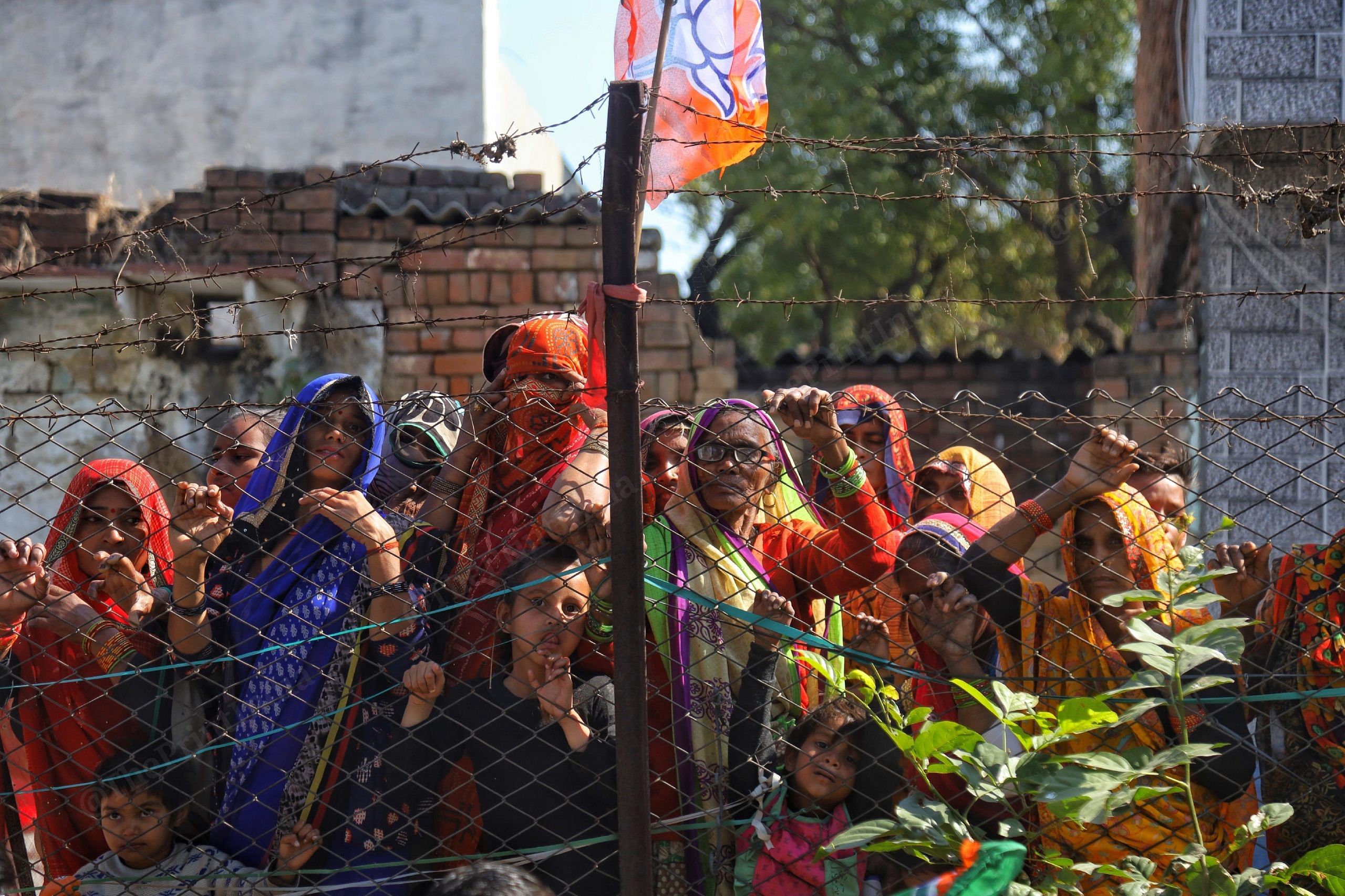
Earlier this month, the Election Commission announced that over 28.86 lakh women had got their names registered in the voting list compared to 23.92 lakh men in Uttar Pradesh. The enrolment of women has improved the voter gender ratio in Uttar Pradesh by 11 points.
There is so much hype around ‘nari shakti’ (women power) that the Congress planned an entire campaign around women — ”Ladki hu, lad sakti hu” (I am a woman, I can fight). Priyanka Gandhi Vadra announced 40 per cent tickets for women candidates in the election.
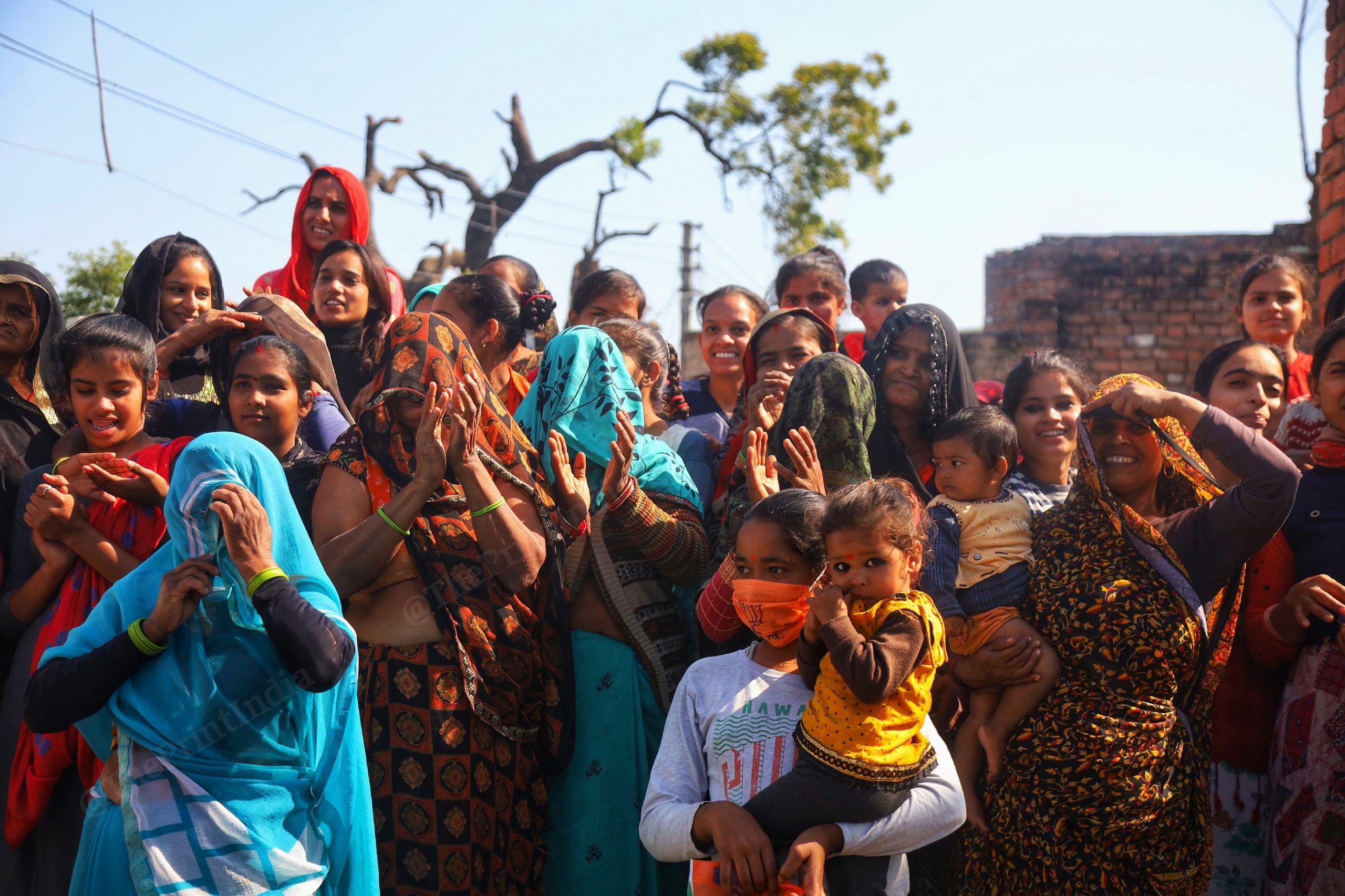
The BJP manifesto for the UP election emphasises women empowerment and promises female college students free scooters. Even the Samajwadi Party has created a manifesto around helping needy women in the state.
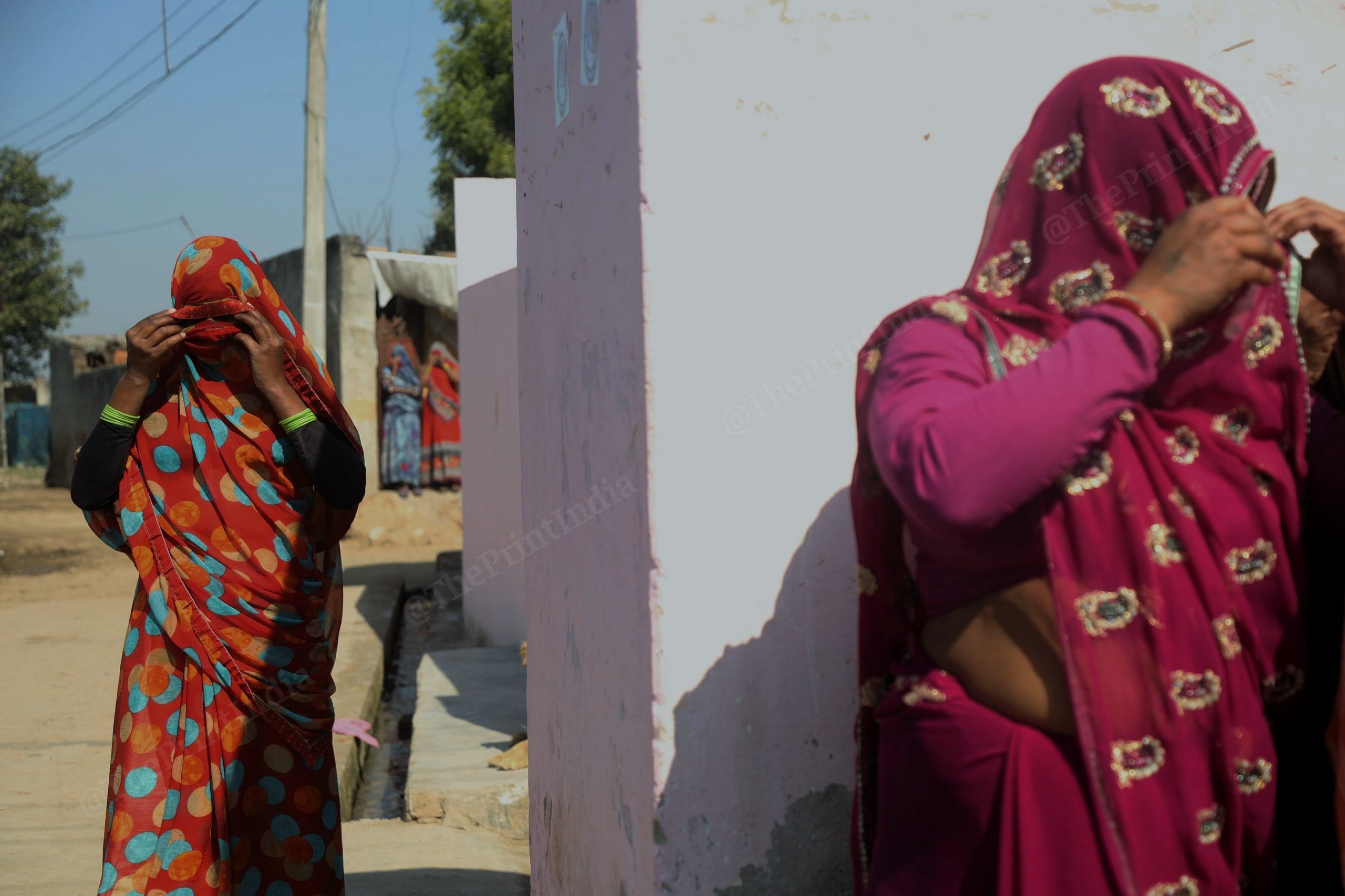
But this inclusiveness and empowerment seem to fail when we see the literal positioning of women during campaigns. They are pushed to the edges and take the back seat when political leaders give speeches. They take the corners, stand on balconies and terraces, and behind men to even get a glimpse of their leader.
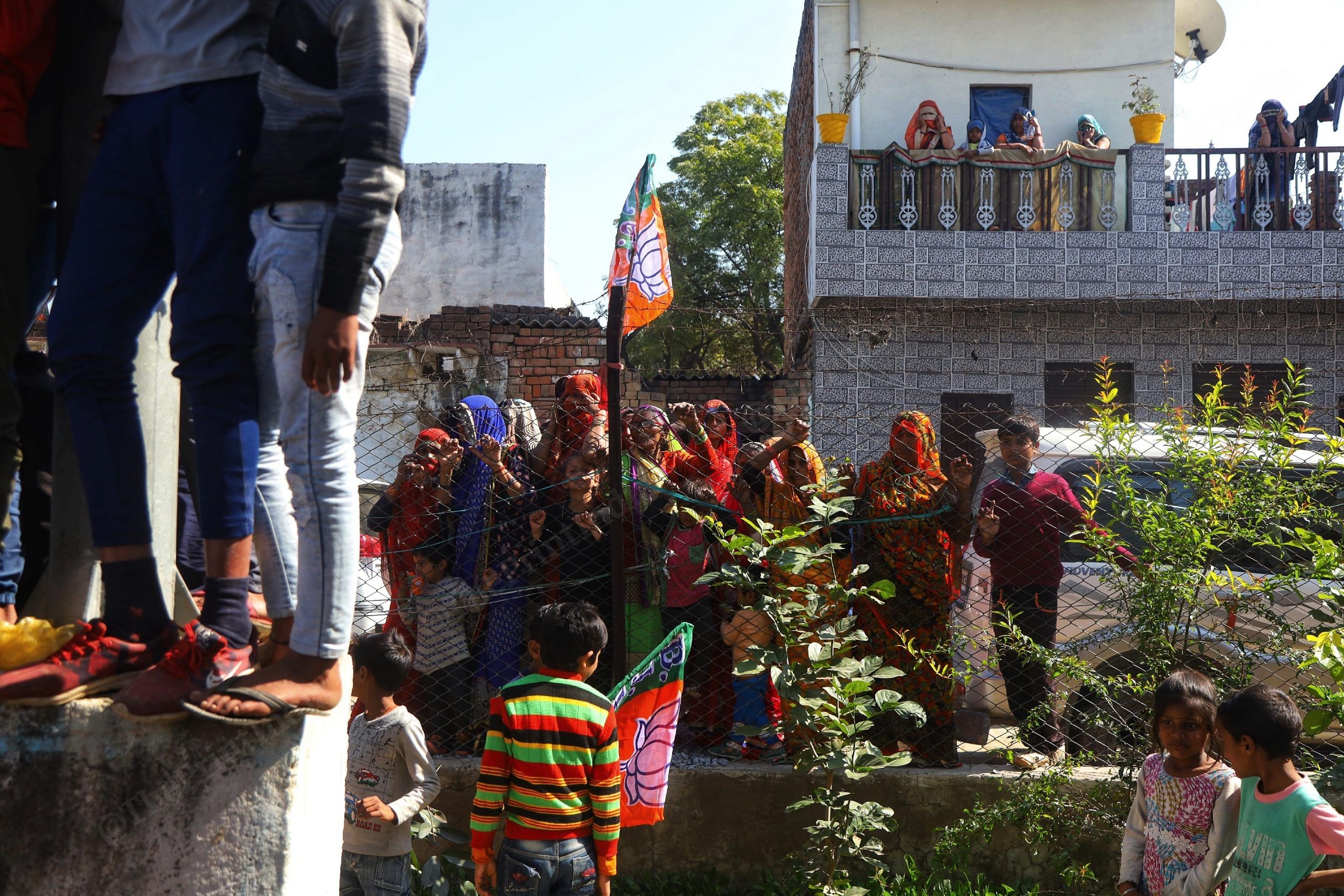
Lakshmi stood with 20 women at least 30 feet away from the area where BJP candidate from Agra, Baby Rani Maurya, was delivering her speech on 29 January. It was a door-to-door campaign in Agra, not any big rally or roadshow. It saw around 100 people gathered in an open space to see Maurya.
The 30-feet distance between Maurya and these women was not empty. It had men — young, old, middle-aged — surrounding and blocking the view of these women. The women, who were standing at the periphery, shouted slogans and clapped from a distance. Some tried to stand on elevated platforms to get a better view of the BJP leader, but they couldn’t.
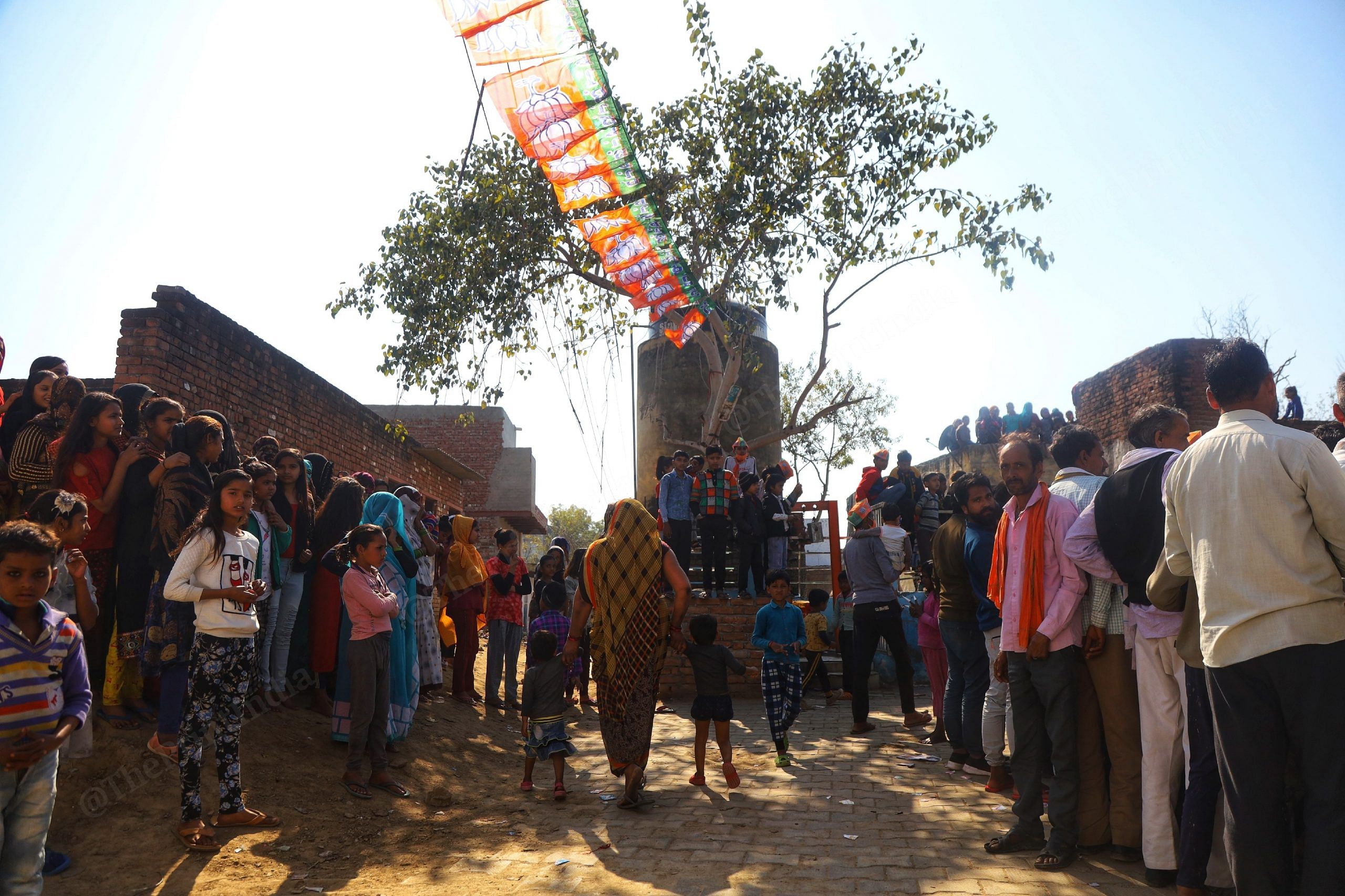
Lakshmi, who had come running from her home after listening to the hustle-bustle in her village, said, “Bola humne in admiyon ko hutne ke lie, ye sunte hi nahi humari. Abh toh hum unki awaz sunke hi khush hai.” (We asked the men in front to move, but they did not listen to us. We are happy that we can listen to her voice)
I stood at the same place where these women were standing, trying to get a look at Maurya. Unfortunately, even my height — 5’7’’— could not help me get a glimpse of her. We were told that women are sidelined in every election, and as a photographer, this was a common frame for me across campaigns and villages. No matter if the village was Thakur or Dalit predominant. Unless a politician wants to proactively foreground women, they are relegated to the fringes.
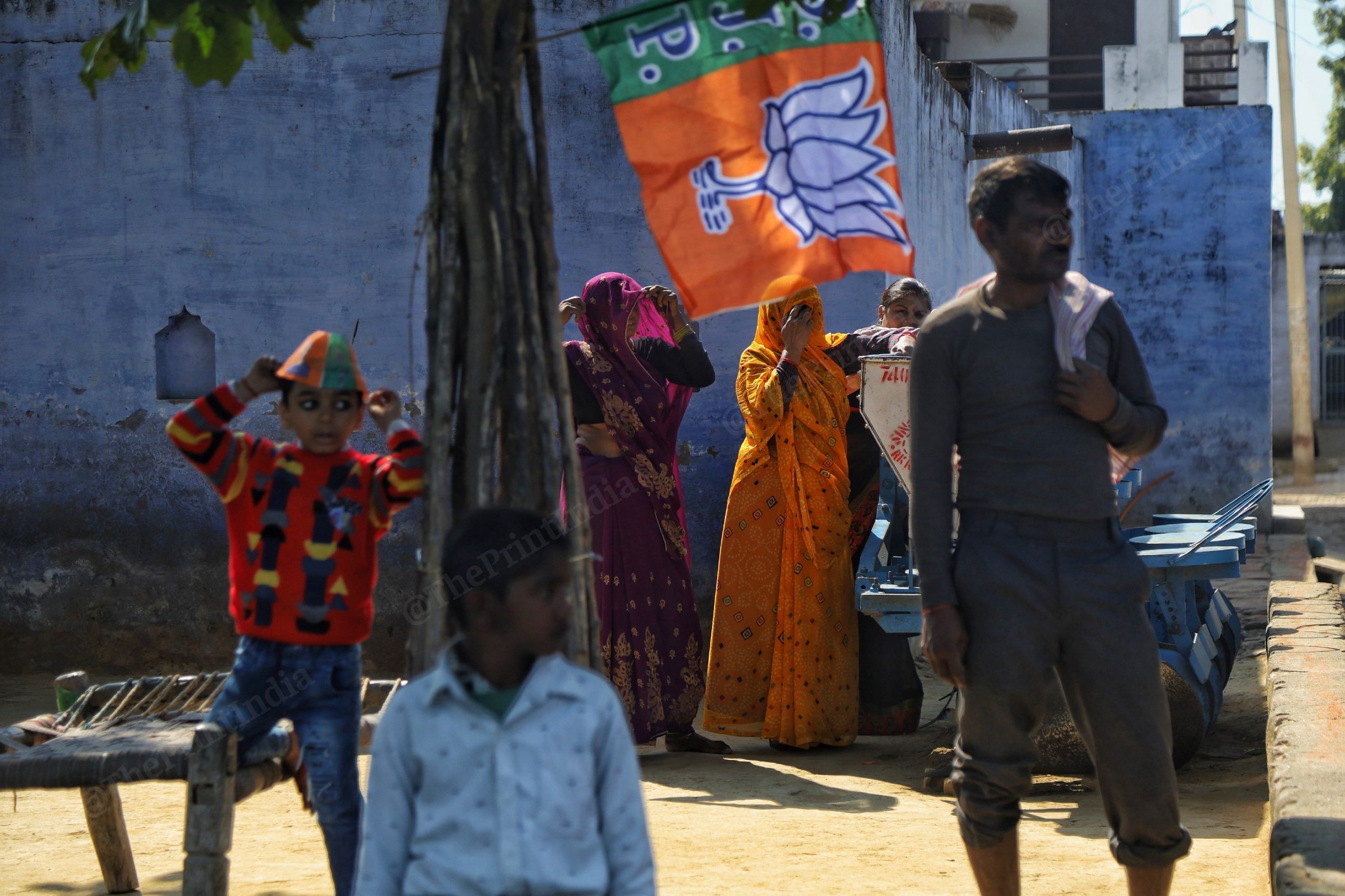
Even when Maurya’s campaign trail stopped at Salemabad, a Jatav-dominated area, women who wanted to see her had to either push men to make space for themselves or were happy to stand on a heap of stones, or looked from behind barbed wires.
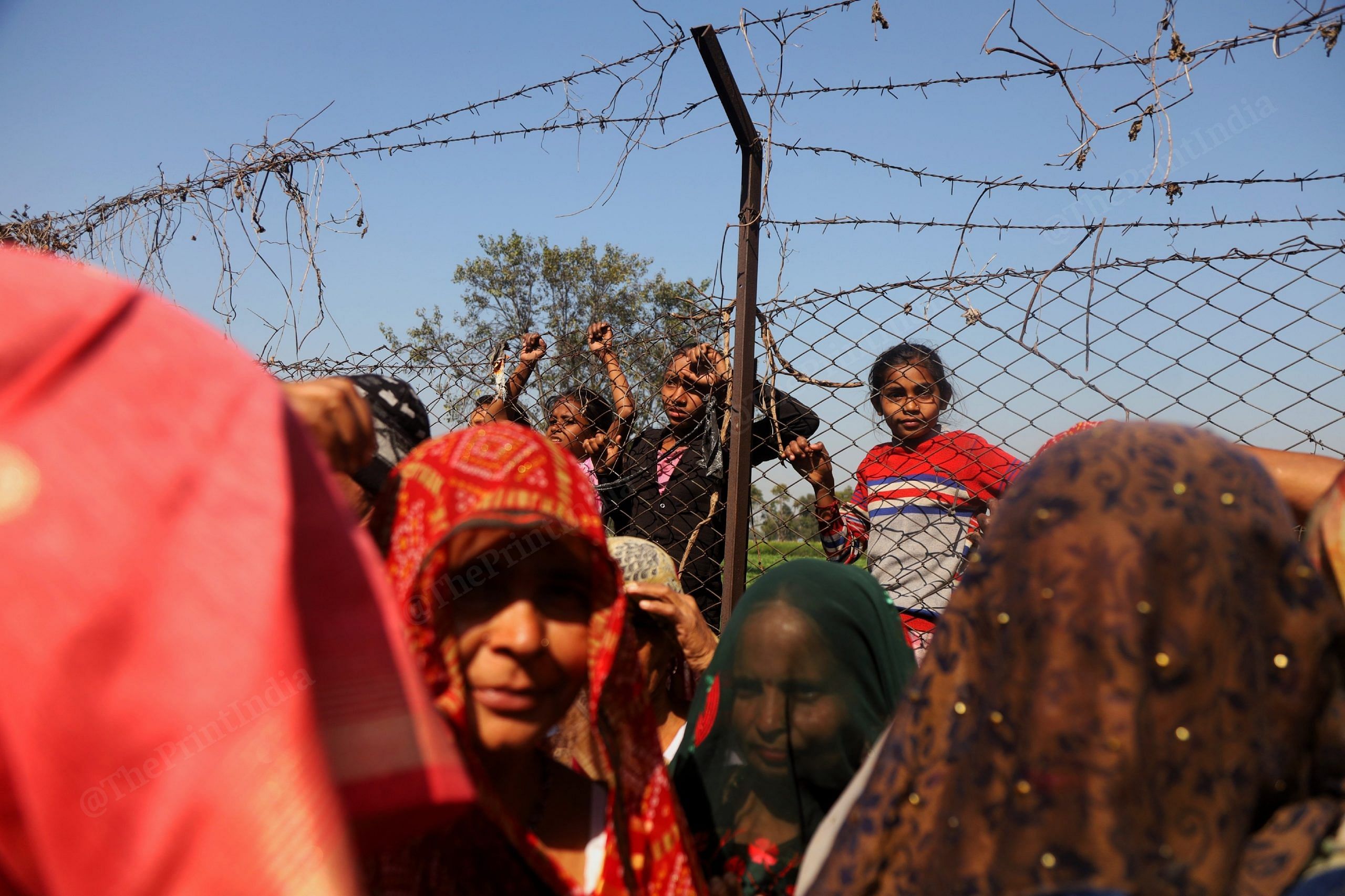
When we talked to the women, they complained about their disappointment with the government, how consecutive lockdowns and the pandemic had ruined their livelihoods, making survival nearly impossible.
Parvati now works as a domestic worker. She said, “No party came to help us during the lockdown, we did not have food to eat”. They all made efforts to reach out to the political leaders — the difference between ‘Nari Shakti’ manifestos and reality starkly visible.
